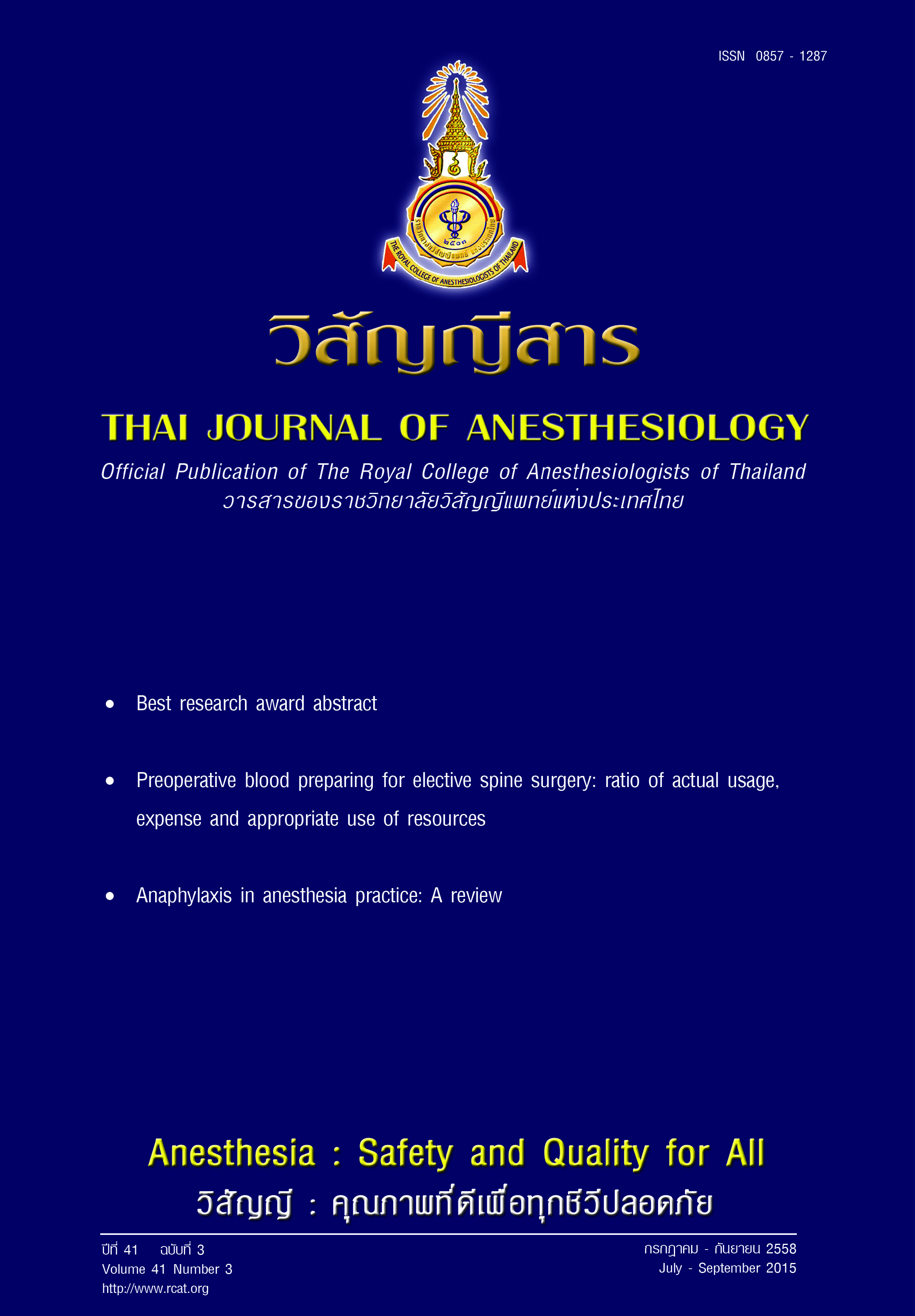Prevalence and Influencing Factors Related to Non-Prescribing Anxiolytic Drug of Anesthesia Residents
Main Article Content
Abstract
Background: Previously, anxiolytic premedication was commonly administered before surgery1,2. Nowadays, easy access to information about healthcare and improved quality of care included anesthetic techniques, surgical techniques and postoperative pain control may decrease patients’ preoperative anxiety3. This study aimed to find out the current prevalence of non-prescribing anxiolytic premedication and factors influencing.
Methods: This prospective descriptive study was conducted in patients who underwent abdominal surgery, head, neck and breast surgery, genitourinary surgery, gynecological surgery, orthopedic surgery and eye surgery. Demographic data, surgical data, anesthetic data, patients’ preoperative anxiety levels and prevalence of non-prescribing anxiolytic drugs for premedication were collected. Patients’ factors included sex, age, ASA physical status, education level, experience of surgery and diagnosis of malignancy. Surgical factors included type of surgery, positioning, and bowel surgery. Anesthetic factor was the choice of anesthesia. The Amsterdam Preoperative Anxiety and Information Scale (APAIS) Thai version was used to measure the preoperative anxiety levels4,5. Questionnaires were also delivered to anesthesia residents to survey their opinions about factors influencing non- prescribing preoperative anxiolytic drugs. Univariate and multiple logistic regression analysis were performed.
Result: Total of 297 patients were enrolled. Mean age was 55.1 ± 15.767 years (range 18-80 years old). There were 33.6% of old age group (age ≥ 65 years), 17.2% of high ASA group (ASA > 2), 40.4% of high education group (tertiary education). The prevalence of non-prescribing anxiolytic drugs for premedication was 161 (54.2%). There were 19.9% of patients who had high APAIS anxiety level (APAIS ≥ 11). Prevalence of non-prescribing preoperative anxiolytic drugs in the patients who had high anxiety score was 47.5%. The factors significant influencing non-prescribing anxiolytic drug of anesthesia residents was high ASA physical status (ASA > 2) (odd ratio 2.43, 95%CI 1.24-4.80, p = 0.01). In anesthesia residents’ aspect, predominant factors on decision making on non-prescribing preoperative anxiolytic drugs were low anxiety patients (n = 94) and the patients who did not request for anxiolytic drugs (n = 57).
Conclusion: The prevalence of non-prescribing anxiolytic drugs for premedication was decreased. The factors affecting on non-prescribing anxiolytic drugs were high ASA physical status. In anesthesia resident’s opinions, their decision on non-prescribing anxiolytic premedication was commonly based on low anxiety patients and not-requested anxiolytic drug patients.


